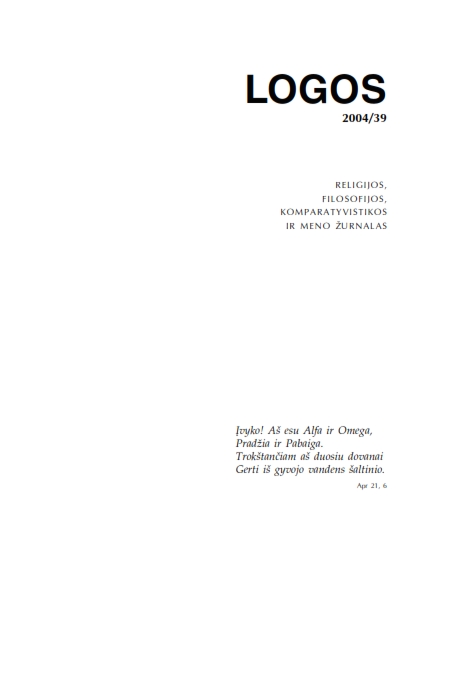Intelekto trečiojo veiksmo aiškinimas scholastinėje logikoje Lietuvoje XVI a. antrojoje pusėje
The Interpretation of the Third Operation of Human Intellect in Scholastic Logic in Lithuania in the Second Half of the Sixteenth Century
Author(s): Vytis ValatkaSubject(s): Epistemology, Logic, Early Modern Philosophy, Philosophy of Mind, Cognitive Psychology
Published by: Visuomeninė organizacija »LOGOS«
Keywords: Discourse; precognition; syllogism; demonstration a priori; demonstration a posteriori;
Summary/Abstract: Representatives of scholastic logic in Lithuania in the second half of the sixteenth century held a traditional Aristotelian definition of the third operation of human intellect. That is, they interpreted discourse as drawing a conclusion from one or more premises. Lithuanian scholiasts asserted discursive knowledge to emerge from a certain precognition. Such a precognition consisted of three parts: a) identification of significates of terms of discursive conclusion; b) knowing that the subject of the conclusion actually exists; c) knowing that all the premises are true propositions. Syllogism was traditionally regarded as the most perfect discourse, to which the other kinds of discursive knowledge (induction, example and enthymeme) were reduced. Only the first three figures of syllogism were considered genuine ones. Meanwhile, the so-called fourth figure was regarded as a mere transformation of the first one. Our theorists traditionally regarded demonstration as the most prominent kind of syllogism. They distinguished two classic kinds of demonstration: a priori and a posteriori. The first one was considered superior to the second.
Journal: LOGOS - A Journal of Religion, Philosophy, Comparative Cultural Studies and Art
- Issue Year: 2004
- Issue No: 39
- Page Range: 21-30
- Page Count: 10
- Language: Lithuanian

